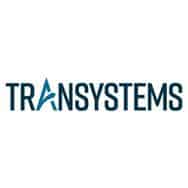Project managers spend the vast majority of their time communicating with others. Depending on the source you reference, the figure can go as high as 80 percent of one’s time is tied-up in some type of communication. A good amount of this time is spent in external communication: the client, the architect, the design team, regulatory officials, vendors, and others. That’s a lot of stakeholders, however, the majority of the time you will invest elsewhere – in team communication. How you approach team communication is by far the most important thing you will do as a project manager.
Effective Team Communication Enables Successful Projects
Think about the teams you’ve served on thus far in your personal or professional time. Some were successful, others not so much. If you spend time considering why success was achieved in certain teams over others, I suspect you’ll find team communication played a role.
Over my career, I’ve served on many teams. Those teams that achieved the best successes by and far enjoyed stronger team communication. The team leader set expectations, maintained open and transparent lines of communication, and encouraged the same across the team. They also were proponents of the Rule of Three C’s – communicate, communicate, communicate.
I attribute the rule to an Air Force Chief I worked with when I was junior captain many years ago. A week didn’t go by where I didn’t hear “captain if you want to be more effective in getting everyone on board you need to communicate, communicate, communicate!”. He was on to something – the teams he led were always the best in the squadron and more often than not, the best on the base.
The take away is that effective team communication enables successful projects. If you foster an environment of open and transparent communication with your team, you also are providing an environment that will enhance the likelihood of project success. Without effective team communication, you greatly reduce the likelihood of project success.
How to Enhance Team Communication
Communication with your team cannot be handled the same way as you handle communication with stakeholders. First and foremost, external stakeholders aren’t people you spend the majority of your time with – your team is. With external stakeholders, communication will be:
- Structured –Requests for Information (RFIs), agendas, or formal memorandums
- Time Bound –scheduled meetings or reports, Project Management Reviews
- Controlled –constrained to a specific issue/topic and the need to be substantiated with backup information
Team communication will be:
- Structured and Unstructured
- Time Bound and Unbound
- Controlled and Uncontrolled
There are times when you need to have structured team communication, such as with feedback sessions or staff meetings. There are also times when there needs to be unstructured communication, such as spur-of-the-moment conversations about a design approach. How will you approach both so that they’re still a valuable use of time?
Structured conversations tend to equal agendas, facilitated discussion, and tracking action items. Do yours? How about unstructured conversations? These are the water cooler conversations that take place that weren’t scheduled, don’t have an agenda and tend to happen ad hoc. How do you deal with these? From my experience, these are often the conversations where big ideas are hatched and they also tend to be the conversations that go undocumented, and hence oftentimes un-acted upon.
My solution? Always have a pen and a notebook on you and develop the discipline to capture the salient points. (I always carry a Moleskine Volant notebook and a pen and put key items into Asana at the end of each day.)
The Essential 5 Actions for Effective Team Communication
Here are five actions to consider implementing with your team communication:
Schedule Performance Reviews and Feedback Sessions
No one likes operating without feedback from the boss. Even those people who say they don’t need feedback. Professionals crave feedback in order to adjust activities towards excellence, so take action to schedule these structured communication sessions with your team members.
Set Expectations for Ad Hoc Discussions
Although you need to be open to spur of the moment discussions, you don’t need to lose complete control of your schedule. I’ve been the victim many times of someone who wanted to bend my ear for a minute…that turned into an hour! Engaged project managers do NOT have the time for this. However, they do need to make time for pop-up discussions. The solution? If you find yourself in a pop-up discussion, state right at the start that you only have ten or fifteen or twenty minutes before you need to run. You don’t need to say what you’re running to, but do state a time frame. When the ten, fifteen or twenty minutes have elapsed, politely state you need to go. If the discussion is really good, take a note in your notebook to schedule a structured communication to discuss further.
Provide Training Opportunities
Depending on the communication skills of each team member, look for opportunities to hone those skills. This might involve something as simple as a simple training session on developing agendas or minutes. Or, it may be more involved to include letting them run a project management review presentation or facilitating a design charrette. The key is to up the communication opportunities for everyone on your project team to the level of their ability, then move them along further. This not only prepares each of them for their next assignment after the current project but provides you with a deep bench when it comes to effective project management.
Mandate the Use of Agenda, Minutes, and Issue Logs
I’ve already touched on the use of agenda and minutes in meetings. So, I’m hitting the topic again to foot stomp the formal use of these documents. A meeting without an agenda, minutes and an issue tracker is a conversation. I have conversations all the time and although enjoyable, don’t move the project forward. Meetings either move the project forward or are a time suck.
I attend meetings routinely where one group uses very detailed agendas, maintains meticulous minutes and tracks actions on an issue log. The other group has a rudimentary agenda, the minutes are sketchy and no one seems to grasp the idea of an issues log…the same issues tend to resurface at each meeting. Which group do you think is moving the project forward? Which meeting do you want to sit in?
Make Space for Open Dialog
Above I covered how to capitalize on ad hoc conversations by capturing key points in a notebook. You also need to make some space for plain, old dialog. This is unstructured, not project focused and intended to build rapport and a relationship. If this can’t occur on the job, then build it into brown bag lunches, Friday afternoon happy hours, or some other social activity to specifically engage in the type of team communication that builds relationships, trust, and yes…friendships. Project teams need to perform and they also need to be fun.
Please leave your comments, feedback or questions in the section below on team communication.













